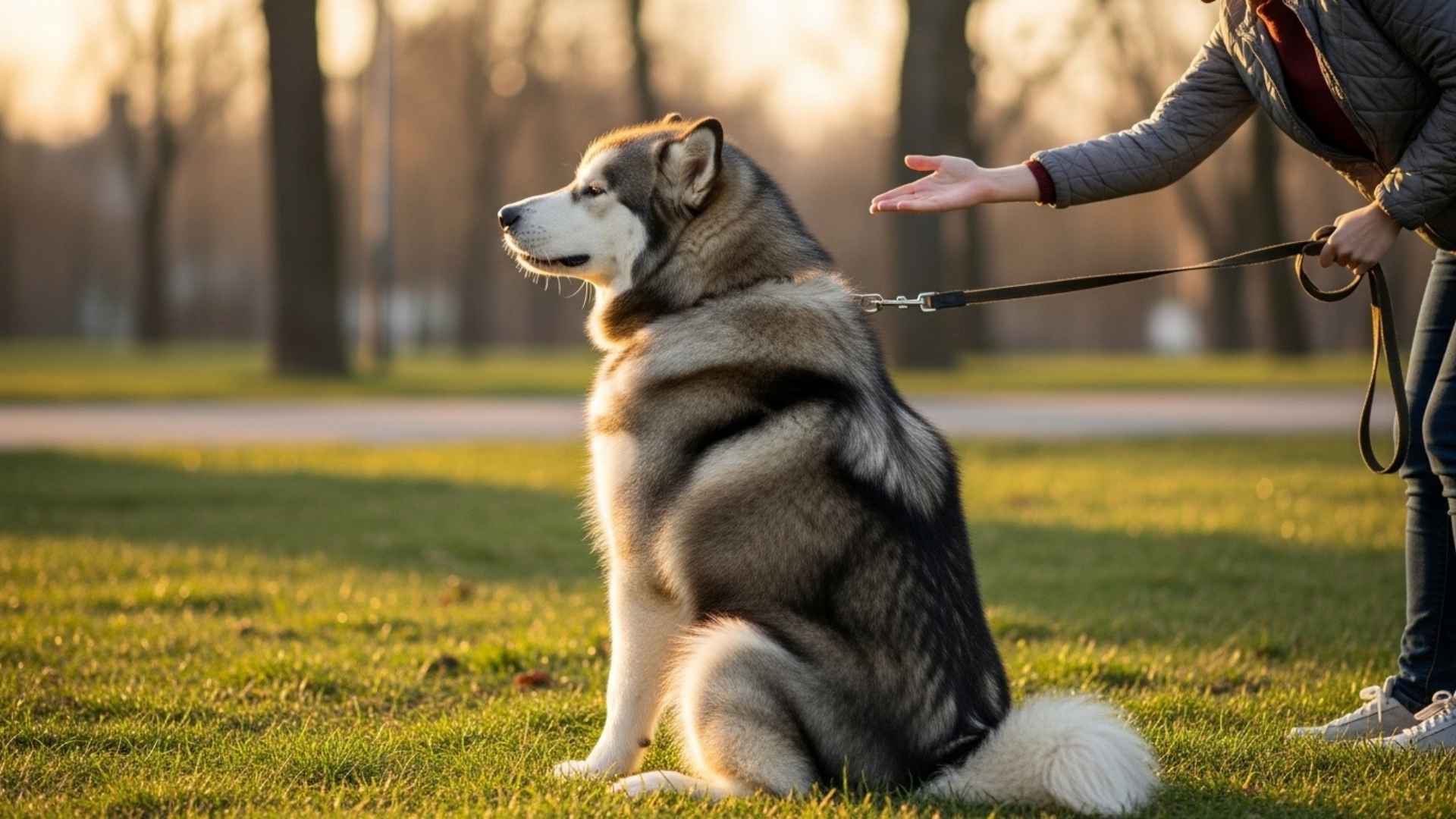Have you ever imagined bringing home a big, loving companion, only to feel overwhelmed by their size, energy, and determination?
Many pet parents believe that affection alone is enough, but some dogs need more than love—they need guidance, patience, and structure. Big dog breeds that are challenging can test even the most devoted owners, whether you are welcoming a puppy or an adult dog into your home.
In the dog world, not all large breeds are easy to manage, and these ten examples stand out for their unique challenges.
Their strength and independence can make everyday activities, from walks to basic commands, more complicated. Without proper training and consistent reinforcement, these dogs may develop unwanted behaviors, leaving even caring owners frustrated.
According to the Whole Dog Journal, training large dogs requires a commitment to consistent, positive reinforcement methods, as their size and strength can make them challenging to manage without proper guidance.
For experienced pet parents, the effort is worth it: these dogs reward patience and dedication with loyalty, affection, and companionship that lasts a lifetime.
Taking on the challenge of a big dog means preparing for a journey filled with energy, intelligence, and unforgettable moments.
Big Dog Breeds That Are Challenging
1. Afghan Hound
Ever met a dog that looks like it just stepped off a fashion runway but thinks training is optional?
Meet the Afghan Hound—a true showstopper with a mind of its own.
Known for their elegance and speed, Afghan Hounds are one of the most challenging breeds for even seasoned pet parents. Their independent nature and stubborn streak can make training a test of patience, and their high prey drive means they may get easily distracted during walks or playtime.
To keep them happy and well-behaved, Afghan Hounds require ample mental stimulation and guidance from a skilled dog trainer. Without this, they can become bored and develop unwanted behaviors.
Despite being one of the more challenging dog breeds, Afghan Hounds reward dedicated owners with loyalty, elegance, and a charming personality that turns heads wherever they go.
For those ready to meet the challenge, this breed is perfect for an experienced pet parent who enjoys a dog that’s as highly intelligent as it is beautiful.
Fun Fact
Afghan Hounds were originally bred for hunting in the mountains of Afghanistan, making them natural athletes with incredible endurance.
2. Alaskan Malamute
Ever wonder if your dog could out-pull a sled?
The Alaskan Malamute might just give it a try!
The Alaskan Malamute is a powerhouse wrapped in a fluffy coat. Originally bred for hauling heavy loads across icy terrains, this breed boasts immense strength and endurance.
However, their high energy levels mean they require regular exercise to stay happy and healthy. Without it, they can become bored and potentially destructive.
Training an Alaskan Malamute isn’t for the faint-hearted. Their independent nature and strong-willed temperament demand proper training techniques. This breed is best suited for families with an active lifestyle who enjoy outdoor adventures and exercise routines.
Consistency and patience are key to managing their behavior and ensuring they thrive as part of your family.
Fun Fact
Did you know that Wikipedia states that the Alaskan Malamute was recognised as the official state dog of Alaska in 2010? This honor reflects their deep-rooted history and significance in the region.
🎧 Dogcast
Episode 8 — Barking, Chaos & Secret Crimes
If you don’t hear sound, tap the button above to enable audio.
3. Bloodhound
Ever wish your dog could be a detective?
The Bloodhound might just be your canine Sherlock Holmes!
The Bloodhound is famous for its incredible sense of smell, making it one of the most difficult dog breeds to train. Their strong tracking instincts and stubborn streak mean they often follow scents instead of commands.
Whether you bring home a puppy or an adult dog, proper training and mental stimulation are essential to manage their behaviour. Without these, even experienced pet parents may struggle with destructive behaviors or unwanted wandering.
Early socialization and exposure to other dogs and other animals help shape a well-balanced Bloodhound. Providing physical stimulation through scent games or long walks keeps them engaged, while reinforcing good habits with consistent, positive guidance ensures they thrive in a family environment.
Fun Fact
The PBS notes that the Bloodhounds have such an acute sense of smell that their tracking results have been used as admissible evidence in court!
4. Caucasian Shepherd
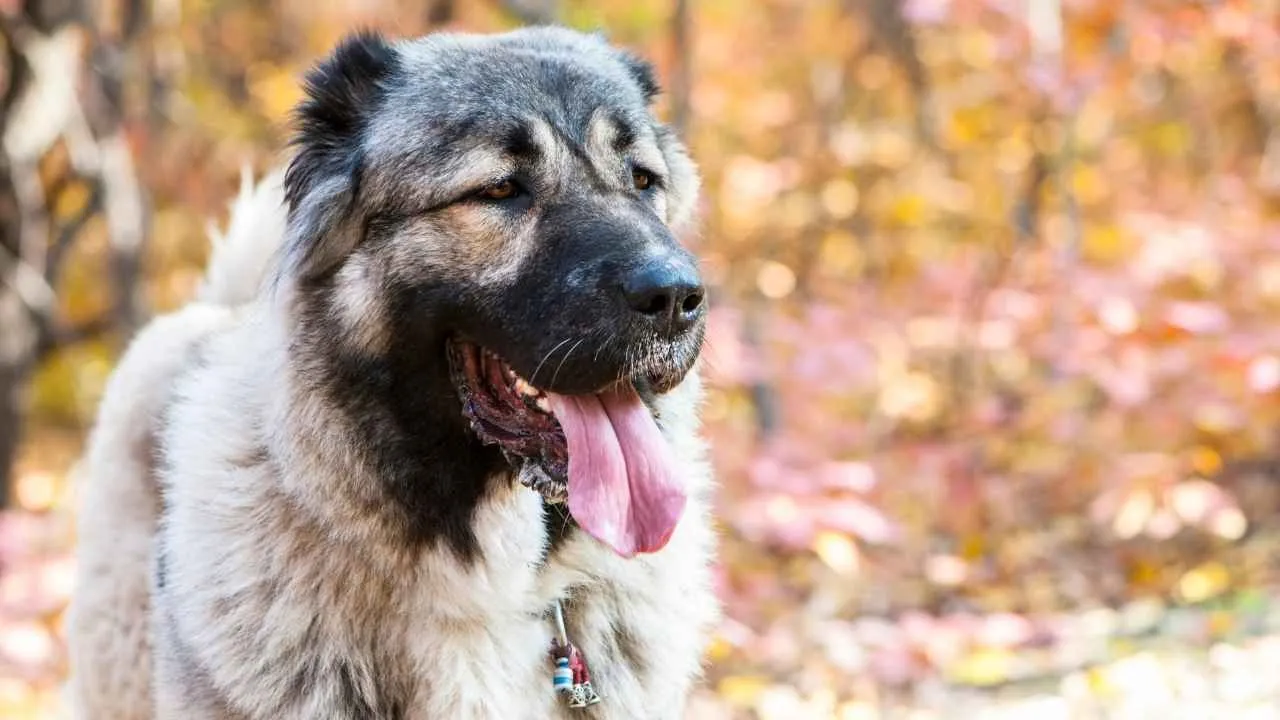
Looking for a dog that can guard your home and still be a loving companion?
The Caucasian Shepherd might be your perfect match!
The Caucasian Shepherd is a massive, strong-willed breed originally bred to protect livestock in the Caucasus Mountains. Their natural guarding instincts make them excellent guard dogs, but these same traits can pose challenges for owners.
Without proper training and firm boundaries, they may become territorial and assertive, which can be overwhelming for inexperienced owners.
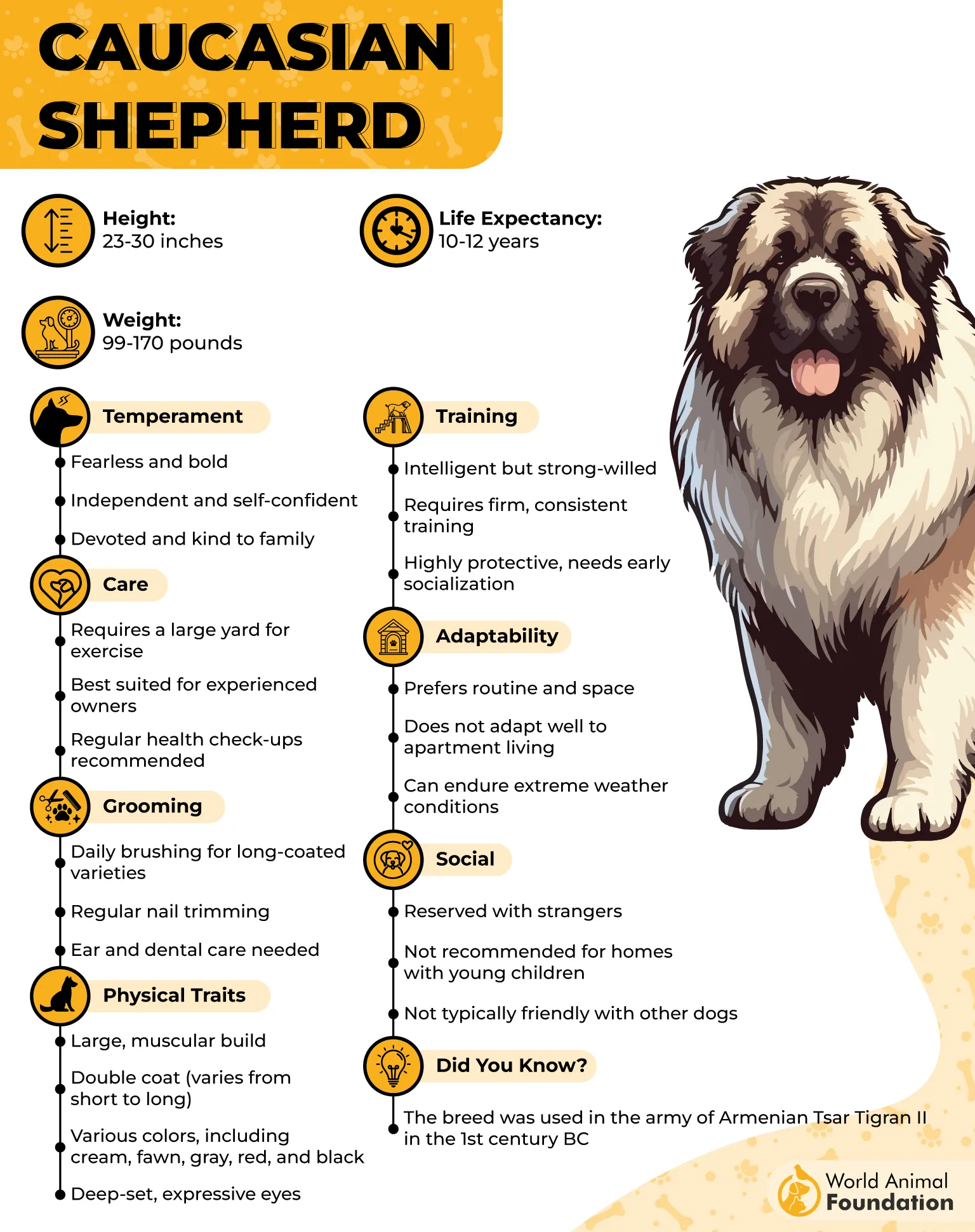
Training a Caucasian Shepherd requires consistency and patience. Establishing yourself as the leader through positive reinforcement and clear commands is essential.
Socializing them from an early age with other dogs and other animals helps in reducing potential aggression and ensures they grow into well-rounded companions.
Fun Fact
Despite their imposing size and protective nature, Caucasian Shepherds are known to be gentle and affectionate with their families, often forming strong bonds with their human companions.
5. Anatolian Shepherd Dog
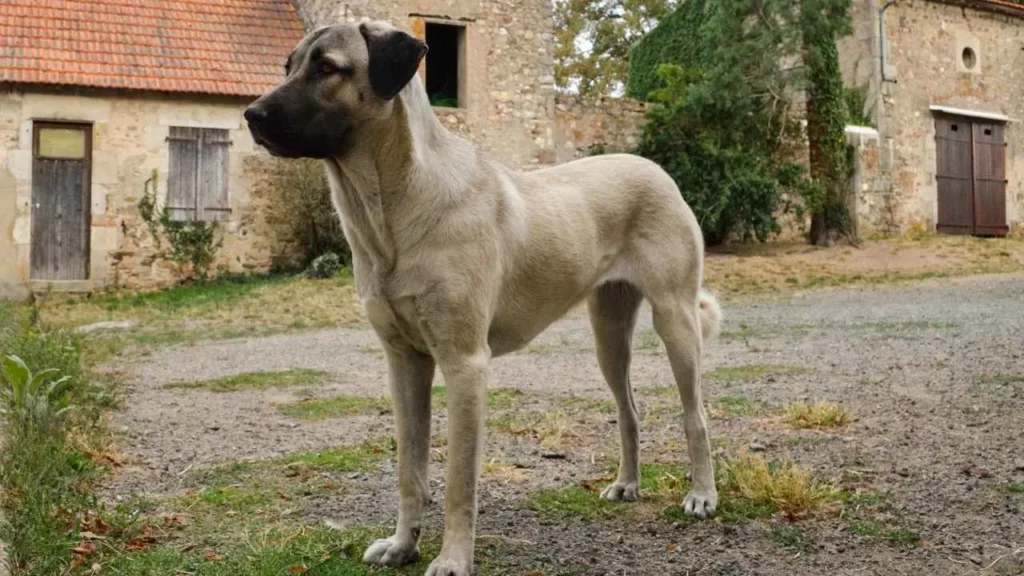
Seeking a dog that’s as independent as it is loyal?
The Anatolian Shepherd Dog might be your perfect match!
The Anatolian Shepherd Dog is a large, strong, and independent breed originally bred to guard livestock in the Anatolia region of Turkey, as noted by Omlet UK. Their instinct to protect makes them excellent guard dogs, but this same trait can pose challenges for owners.
When properly socialized, Anatolian Shepherd Dogs can coexist peacefully with other pets and family members. Training an Anatolian Shepherd requires patience, consistency, and a firm but gentle approach.
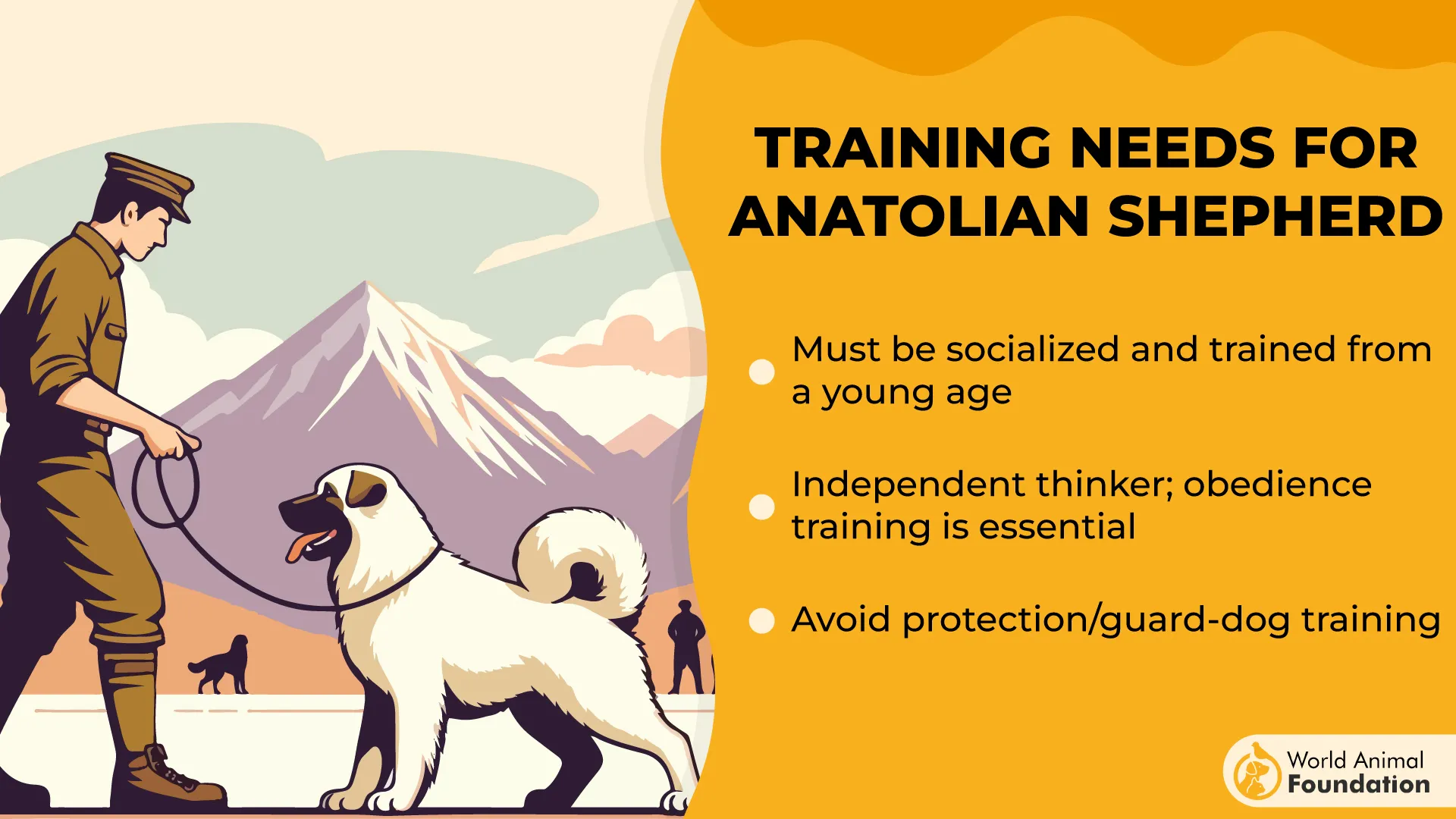
It’s essential to establish yourself as the leader early on and provide clear commands. Socializing them from an early age with other animals and introducing them to various environments will help them become well-rounded and adaptable companions.
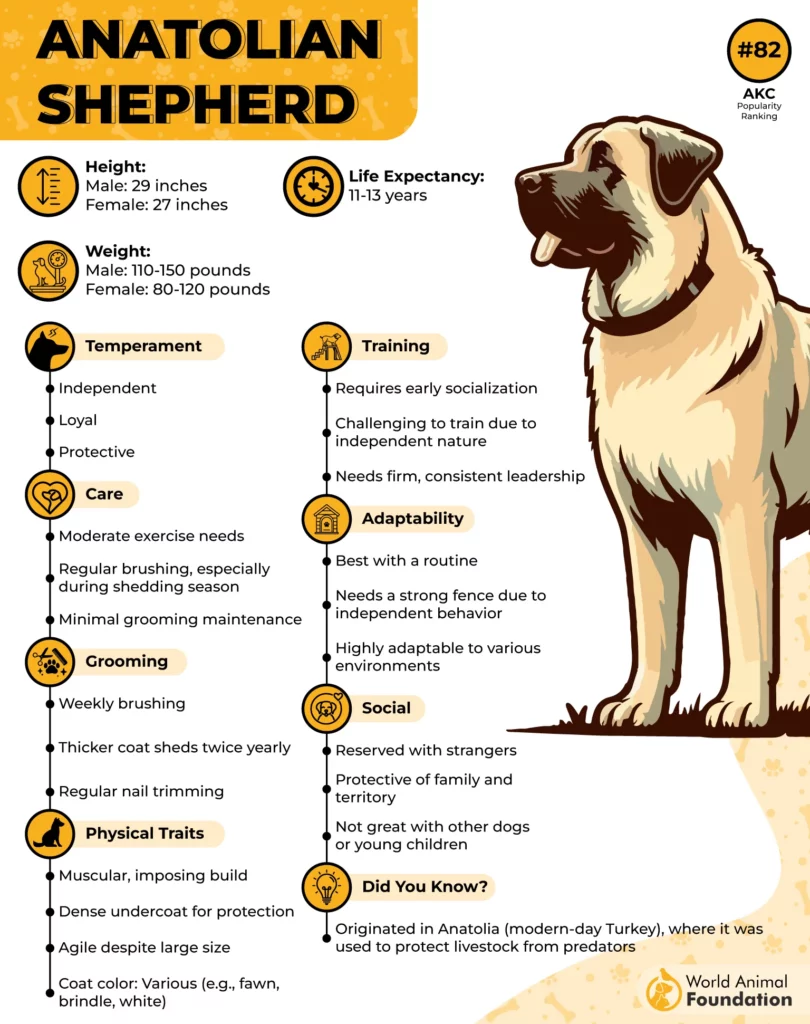
Fun Fact
Anatolian Shepherds are known for their deep bond with their families and their unwavering loyalty. Despite their independent nature, they are incredibly protective and affectionate with those they consider their own.
6. Doberman Pinscher
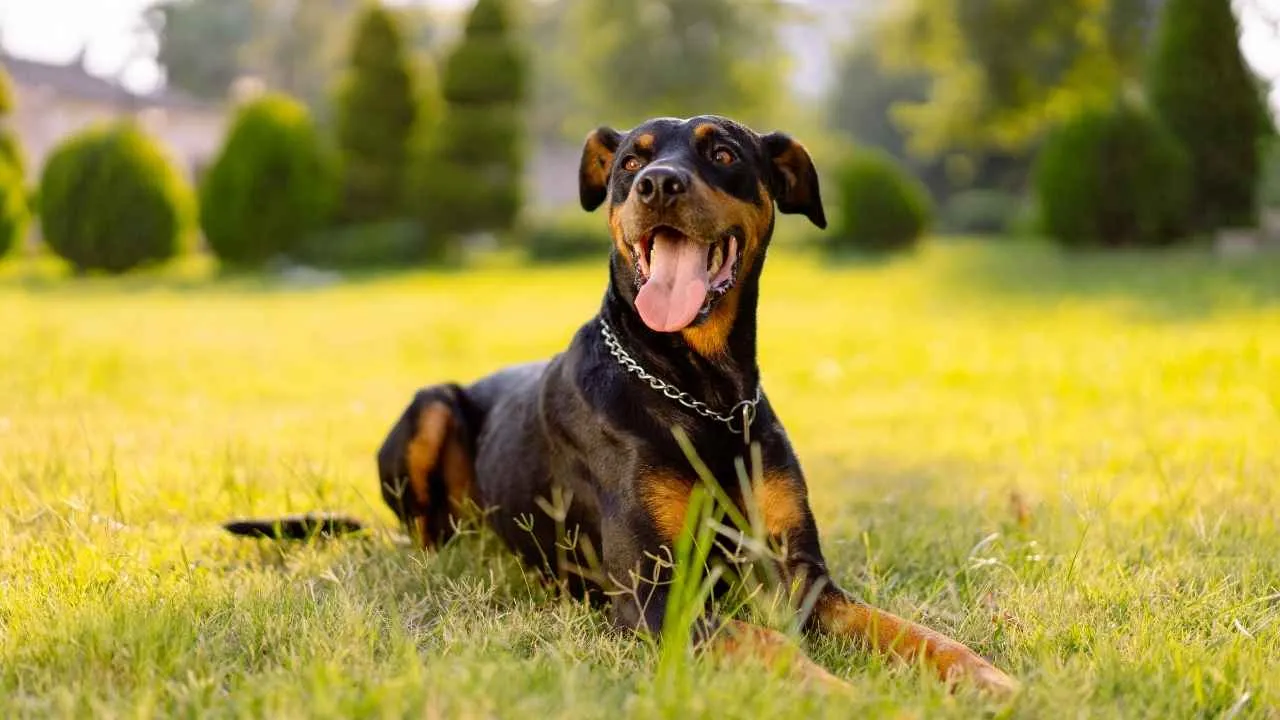
Need a dog that’s as sharp as a tack and loyal to the core? The Doberman Pinscher might just be your perfect match!
The Doberman Pinscher is a powerhouse of intelligence and loyalty. Initially bred for protection work, this breed is known for its strong prey drive and high energy levels. Dobermans should be supervised around small animals and cats to prevent chasing behaviour.
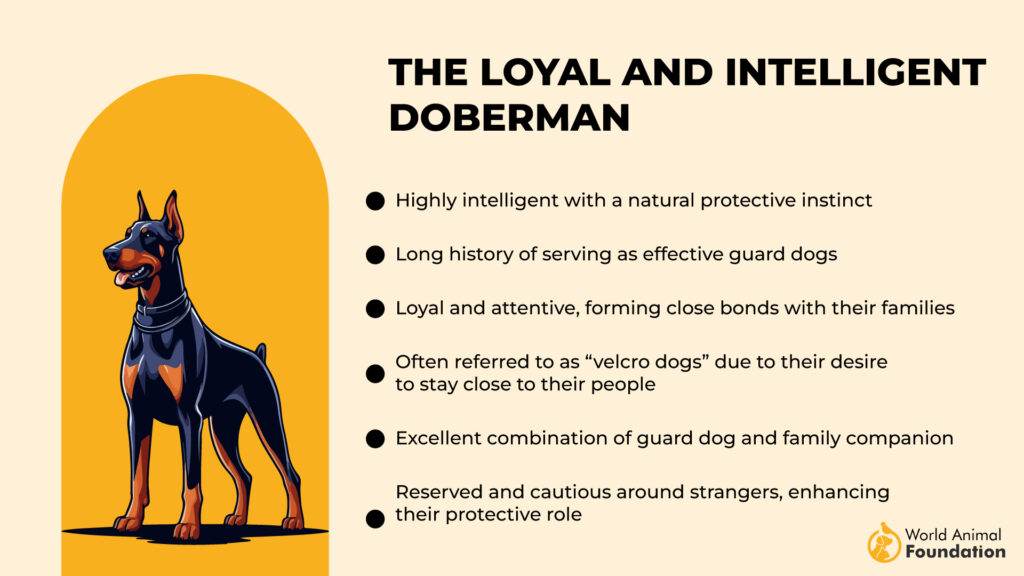
These traits make them excellent working dogs, but that also means they require an experienced pet parent who can provide consistent training and mental stimulation. Providing a daily job or purpose helps these dogs stay mentally stimulated.
Without proper guidance, some individuals may exhibit aggressive tendencies toward strangers or other animals due to their instincts.
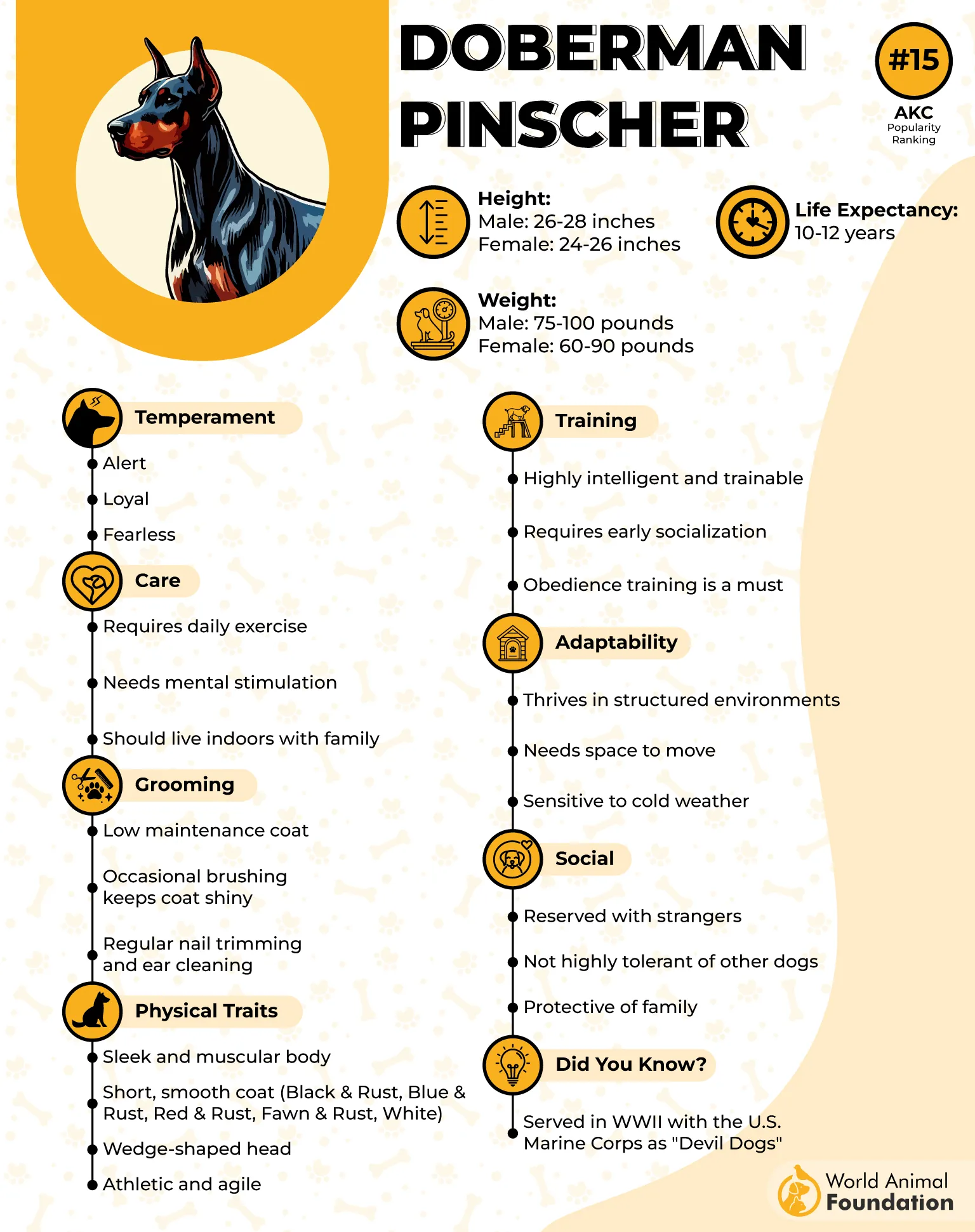
Training a Doberman requires patience and consistency. It’s essential to establish yourself as the leader early on and provide clear commands. Engaging them in activities that channel their energy, like agility training or scent work, can help satisfy their instincts and prevent boredom.
Remember, a well-trained Doberman is not only a loyal companion but also a joy to be around.
Fun Fact
Dobermans were used as messenger dogs during World War II, showcasing their intelligence and versatility.
7. Tibetan Mastiff
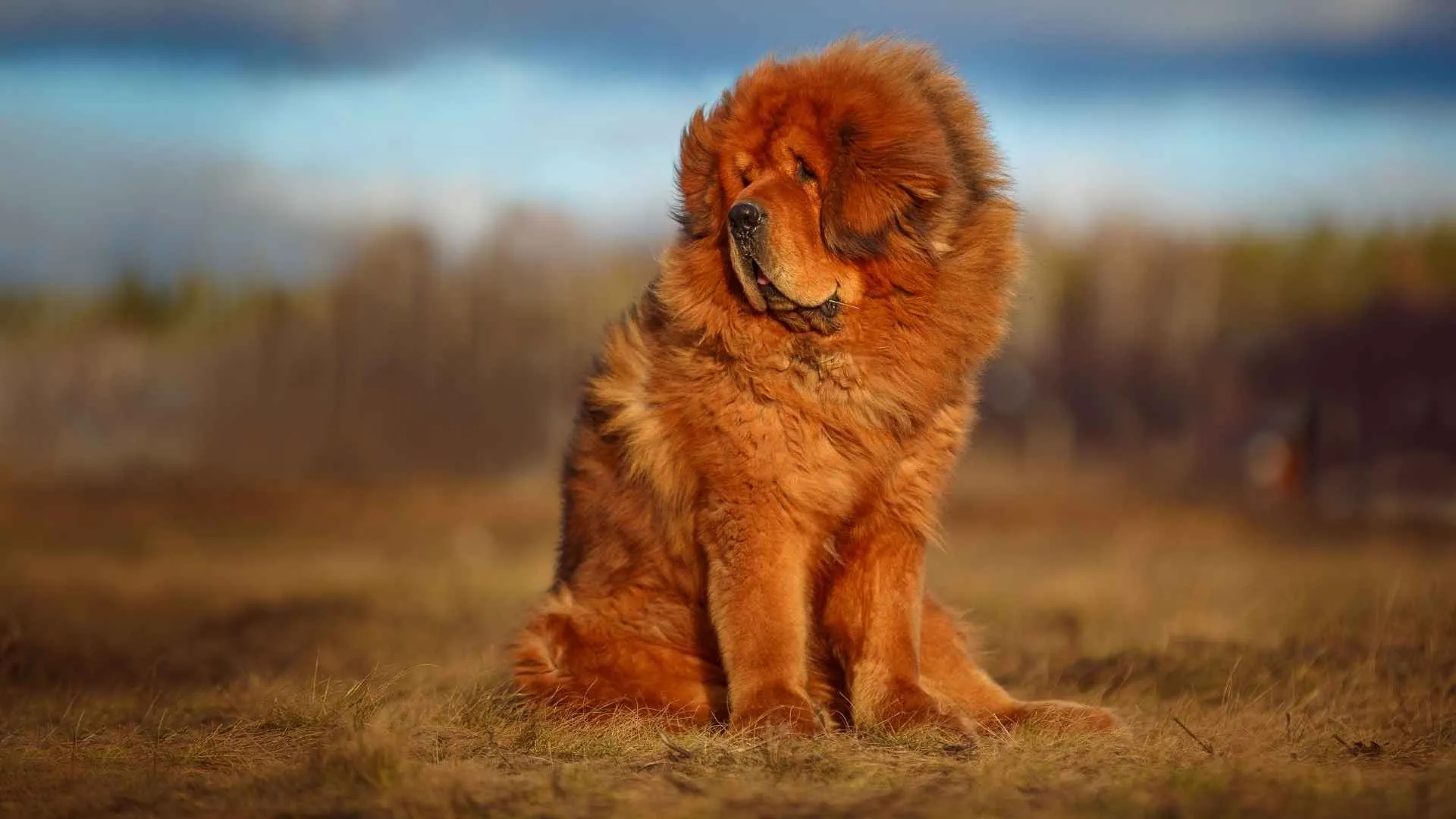
Looking for a dog that’s as independent as it is protective? The Tibetan Mastiff might be your ultimate challenge!
The Tibetan Mastiff is a massive and powerful dog originally bred as a guardian in the Himalayan mountains. Their massive size adds to the challenge, requiring ample space and careful management in daily routines.
Their strong-willed temperament and stubborn breeds make training a real test for even experienced pet parents. Without early socialization and plenty of physical stimulation, this breed can become territorial or overly protective, making daily life a true challenge.
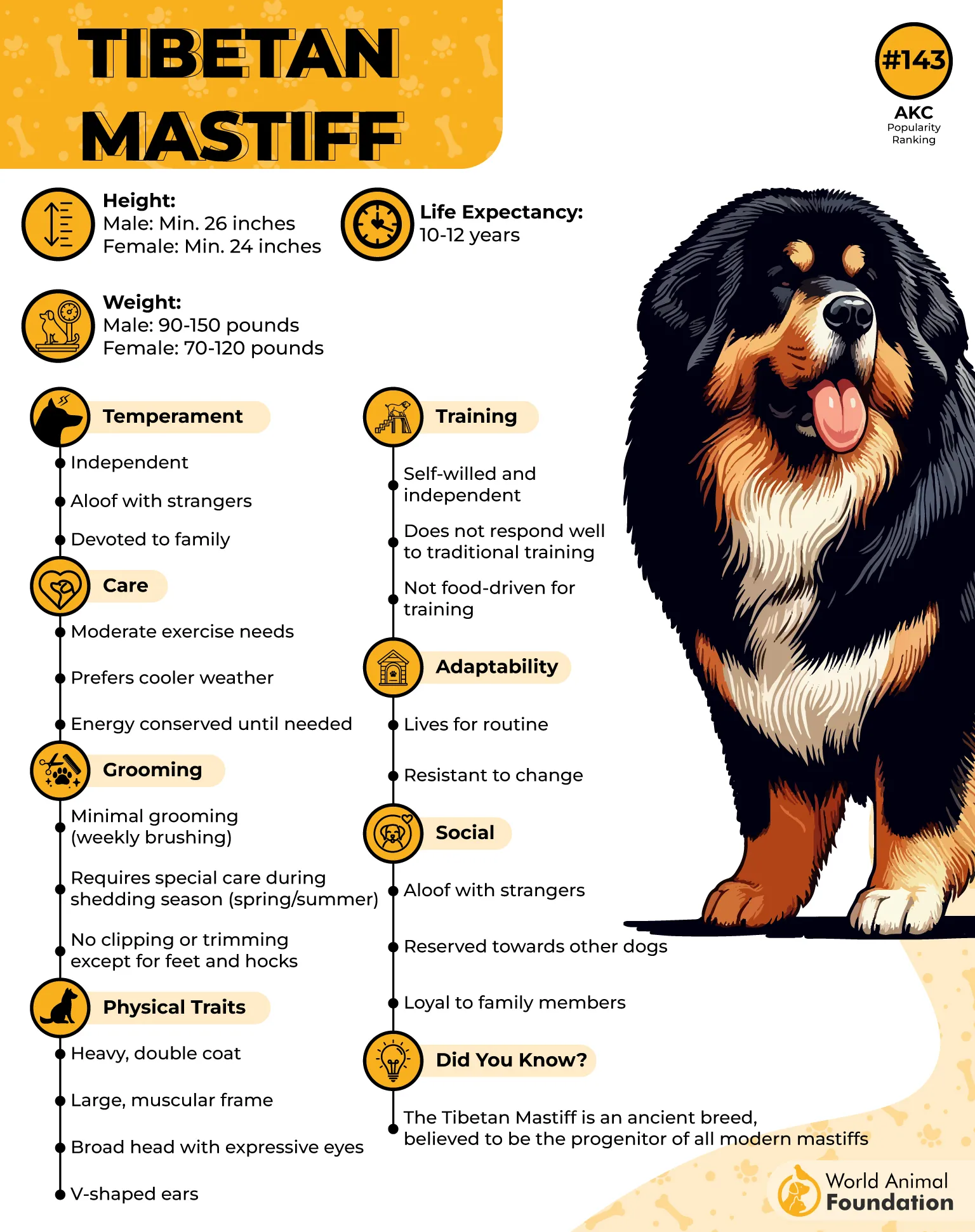
To manage a Tibetan Mastiff successfully, owners must provide proper training and establish firm boundaries. This breed thrives with mental stimulation, such as interactive toys or obedience exercises, and benefits from exposure to other dogs and other animals to develop balanced social skills.
When properly trained, these dogs are loyal companions and excellent guard dogs.
Fun Fact
Tibetan Mastiffs can weigh over 150 pounds and were once considered living property, used as guardians and even as “currency” in ancient China!
8. Sloughi
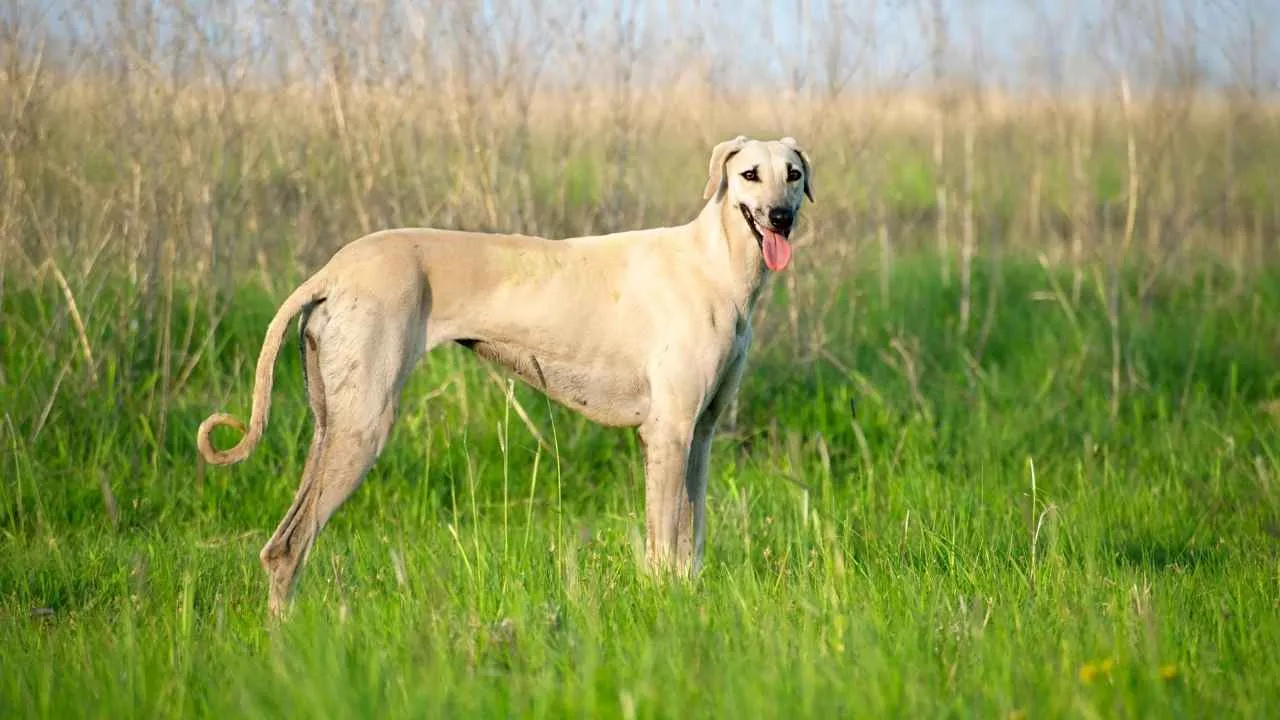
Looking for a dog that’s as swift as the wind and as noble as a king? The Sloughi might just be your perfect match!
The Sloughi, often referred to as the “Arabian Greyhound,” is a sleek and agile sighthound native to North Africa. Renowned for its speed and endurance, the Sloughi was originally bred by nomadic tribes to hunt game across the vast deserts.
This working breed is known for its high prey drive, making it an excellent hunter but also requiring vigilant supervision. Their independent nature means they thrive best with experienced pet parents who can provide consistent training and structure.
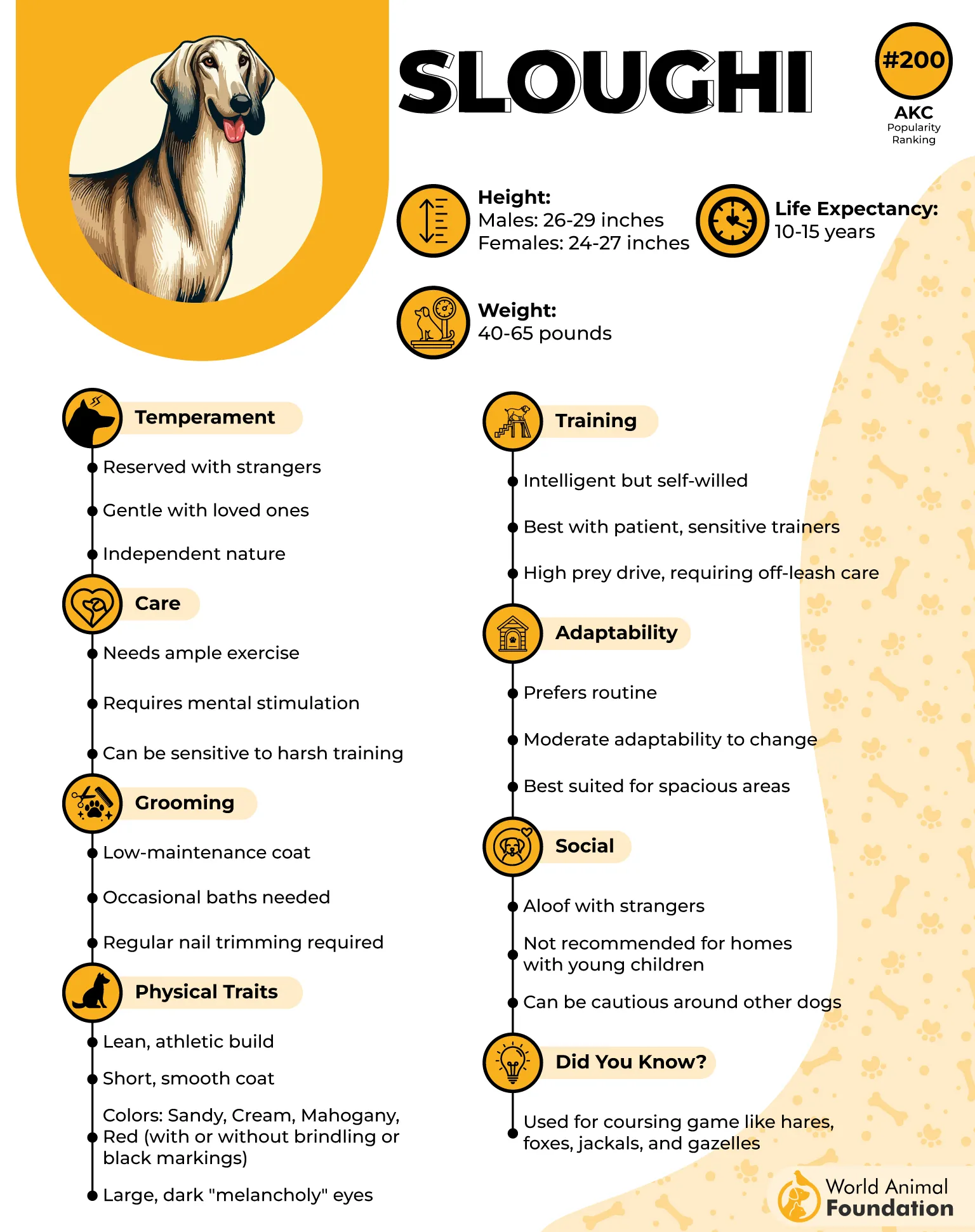
Training a Sloughi requires patience and understanding. Due to their high prey drive, they may not always respond reliably to commands, especially when distracted. Providing mental stimulation through interactive toys and puzzles can help channel their energy positively.
Additionally, regular physical stimulation through long walks and safe off-leash runs allows them to expend their abundant energy.
Socializing them from a young age with other dogs and other animals is crucial to ensure they develop into well-rounded companions. Early exposure to cats helps ensure they coexist safely with small household pets.
Fun Fact
The Sloughi is one of the oldest sighthound breeds, with origins dating back to ancient Egypt, where they were depicted in tomb paintings and hieroglyphics.
9. Bullmastiff
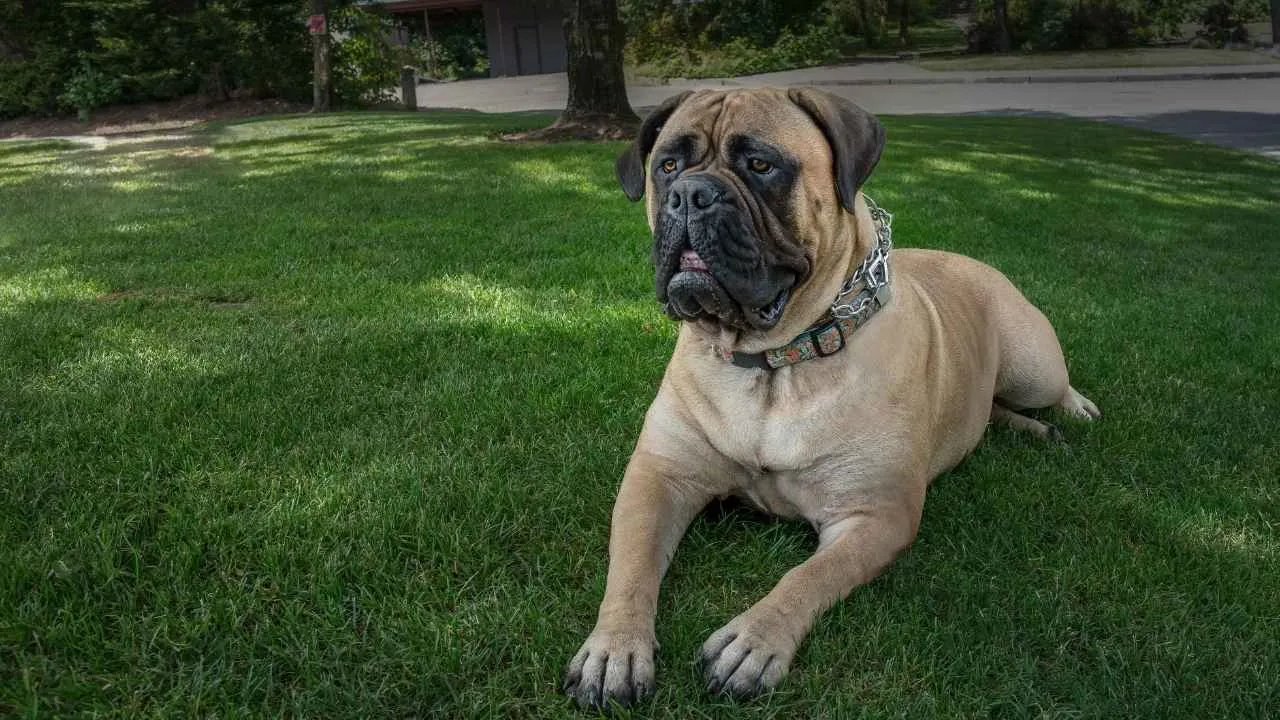
Ever met a gentle giant that can protect your home and still be a couch companion?
Meet the Bullmastiff!
The Bullmastiff is a large and strong-willed dog originally bred to guard estates. While they are loyal and protective, this breed requires early training and proper socialization to thrive in a family environment.
Without guidance, even an adult dog can develop destructive behaviors, especially if left bored or unstimulated. Owners should also be aware of potential health issues, like hip dysplasia, which can affect large breeds like the Bullmastiff.
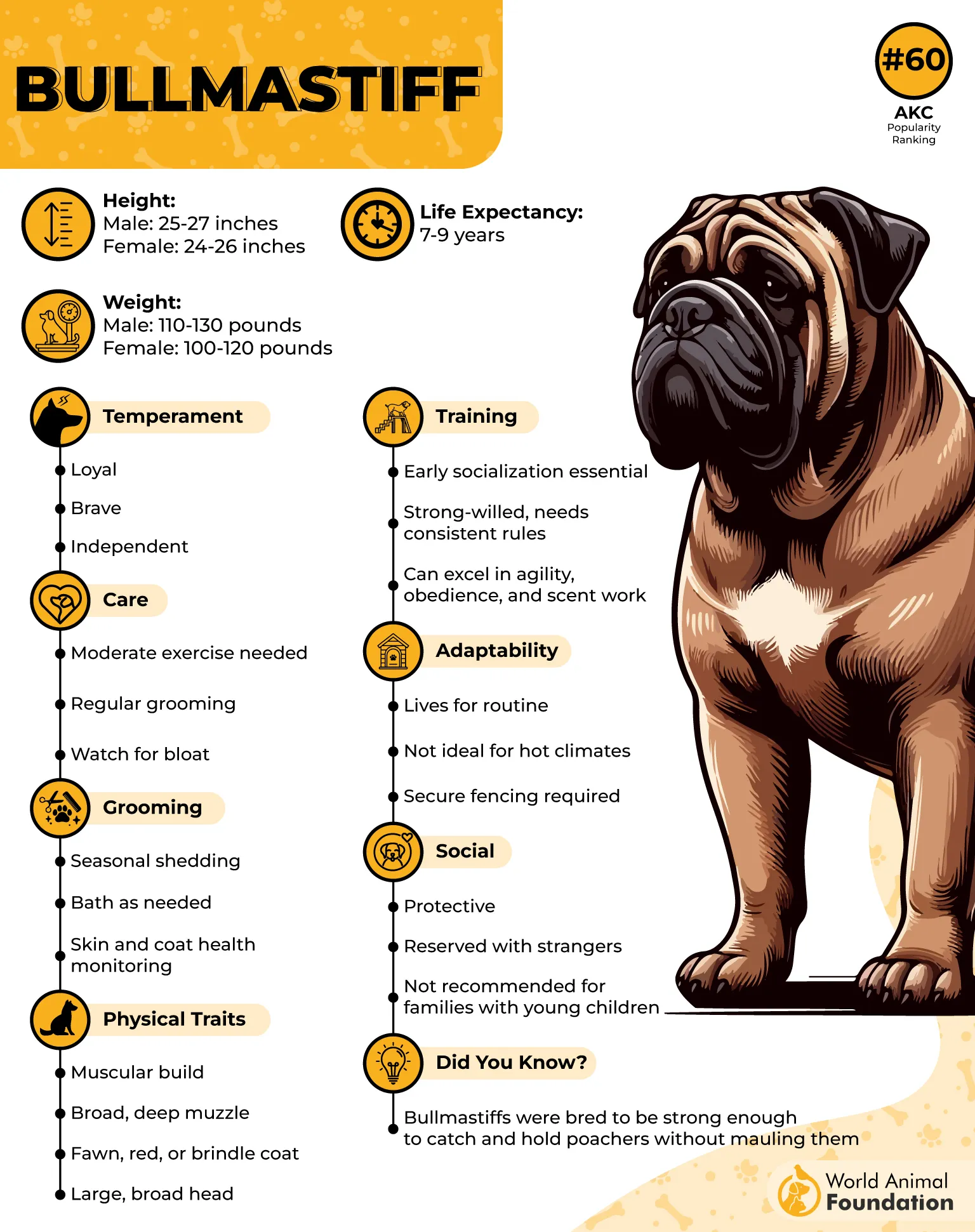
These guard dogs are a good fit for experienced pet parents who can provide consistent boundaries and ample physical stimulation. With the right approach, Bullmastiffs are calm, loving companions who balance their protective instincts with gentle affection.
Fun Fact
Despite their imposing appearance, Bullmastiffs are known for being affectionate with children and can be surprisingly playful!
10. Akita
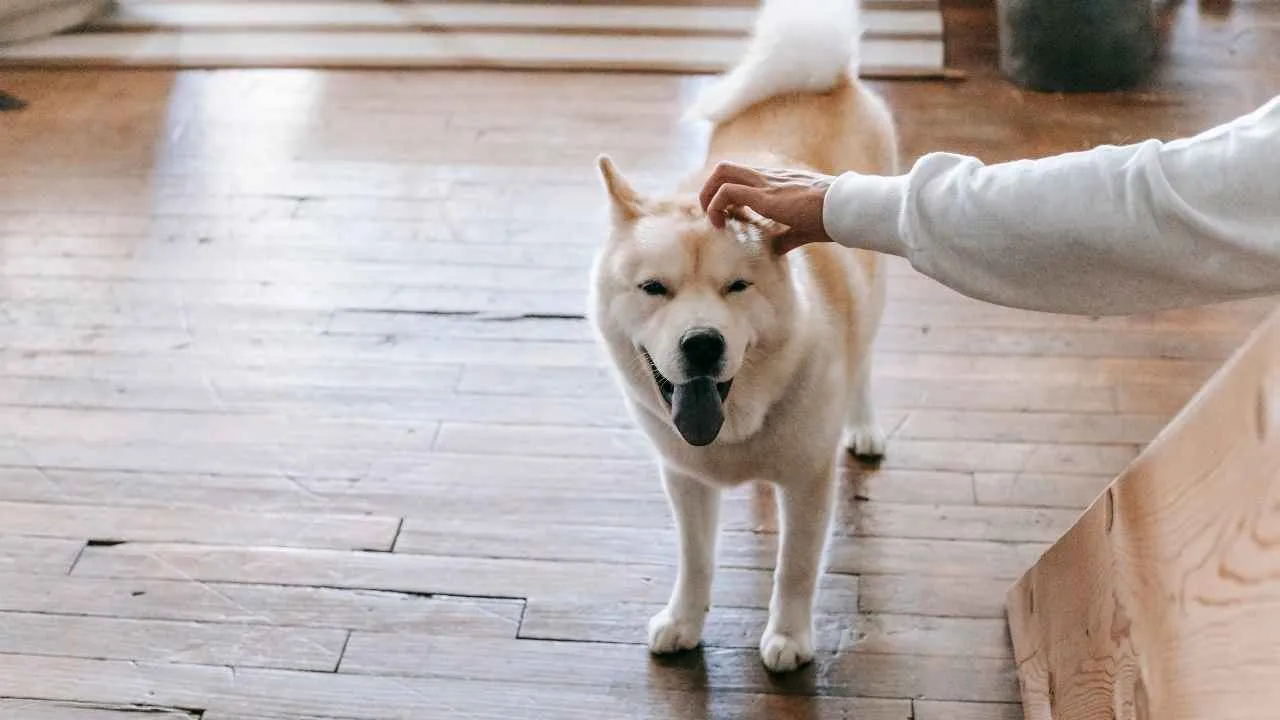
Looking for a dog that’s as independent as it is loyal?
The Akita might just be your perfect match!
The Akita is a powerful and dignified breed originating from Japan, known for its unwavering loyalty and protective nature. The Akita’s large size makes it essential for owners to establish clear rules and boundaries early on.
Historically, Akitas were used for hunting large game, requiring strength and courage.
This breed is characterised by its high prey drive, making it an excellent guardian but also presenting challenges for owners. Without early socialization and consistent training, Akitas can become territorial and aloof, especially with strangers.
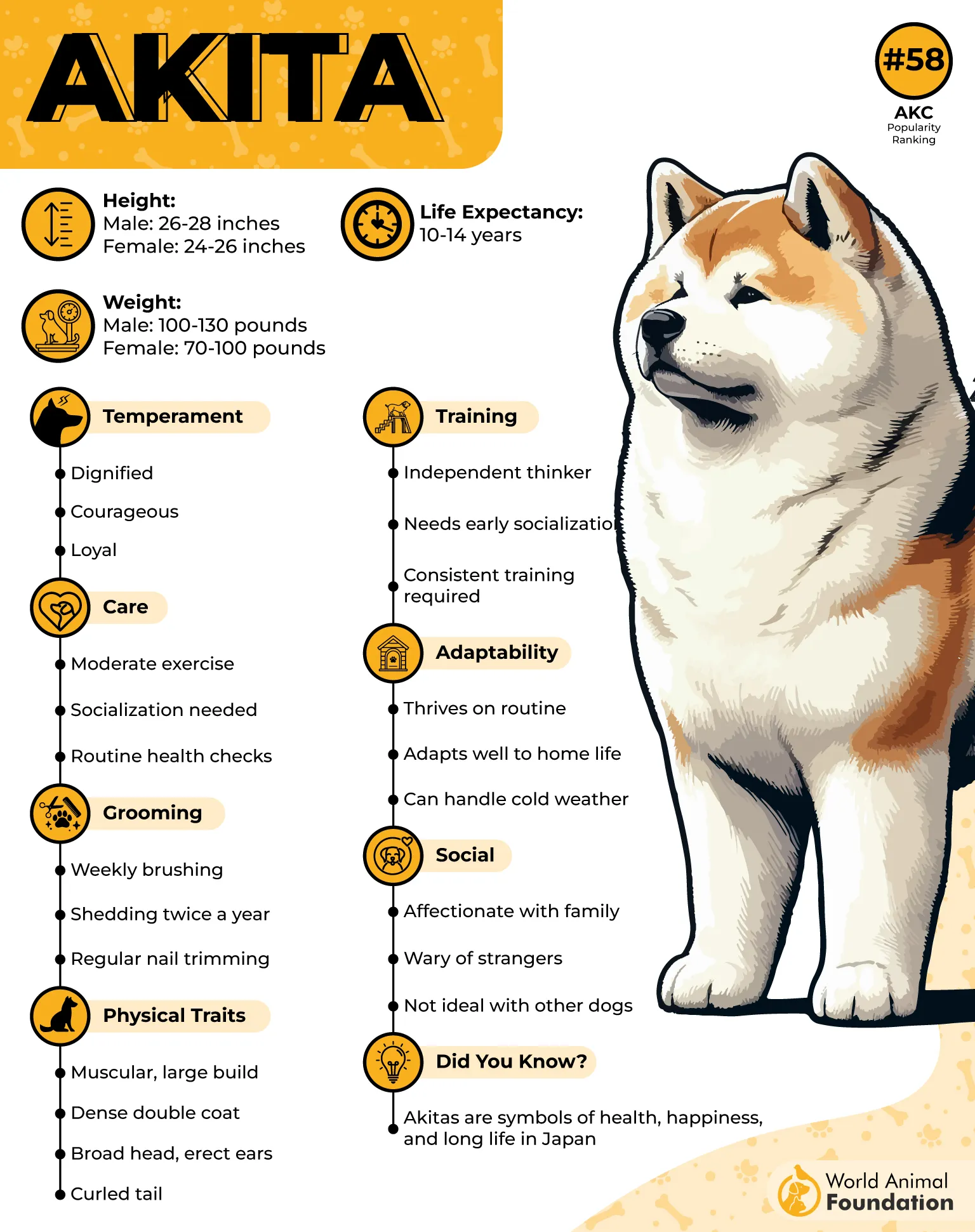
Their independent streak means they may not always be motivated by typical rewards, requiring a firm and experienced handler. Training an Akita demands patience, consistency, and a clear understanding of the breed’s temperament. Establishing yourself as a strong leader early on is crucial.
Engaging them in activities that channel their energy, such as obedience training or agility exercises, can help mitigate their high prey drive. Socialising them from a young age with other dogs is essential to ensure they develop into well-rounded companions.
Fun Fact
Akitas are deeply rooted in Japanese culture, symbolizing health, happiness, and long life. The story of Hachikō, an Akita who waited for its deceased owner every day for nearly 10 years, exemplifies their profound loyalty.
Conclusion
Bringing home a puppy or adult dog from one of the most challenging breeds is a rewarding but demanding experience.
These big dog breeds that are challenging require experienced pet parents who can provide proper training, consistent guidance, and plenty of mental and physical stimulation. Early socialization is key to ensuring that even an adult dog grows into a well-behaved companion.
While the journey may be a challenge, dedicated pet parents will find that these dogs are not only good dogs but also loyal, affectionate, and protective members of the family.
Understanding each breed’s unique temperament and needs before adoption helps guarantee a harmonious and fulfilling life together.


